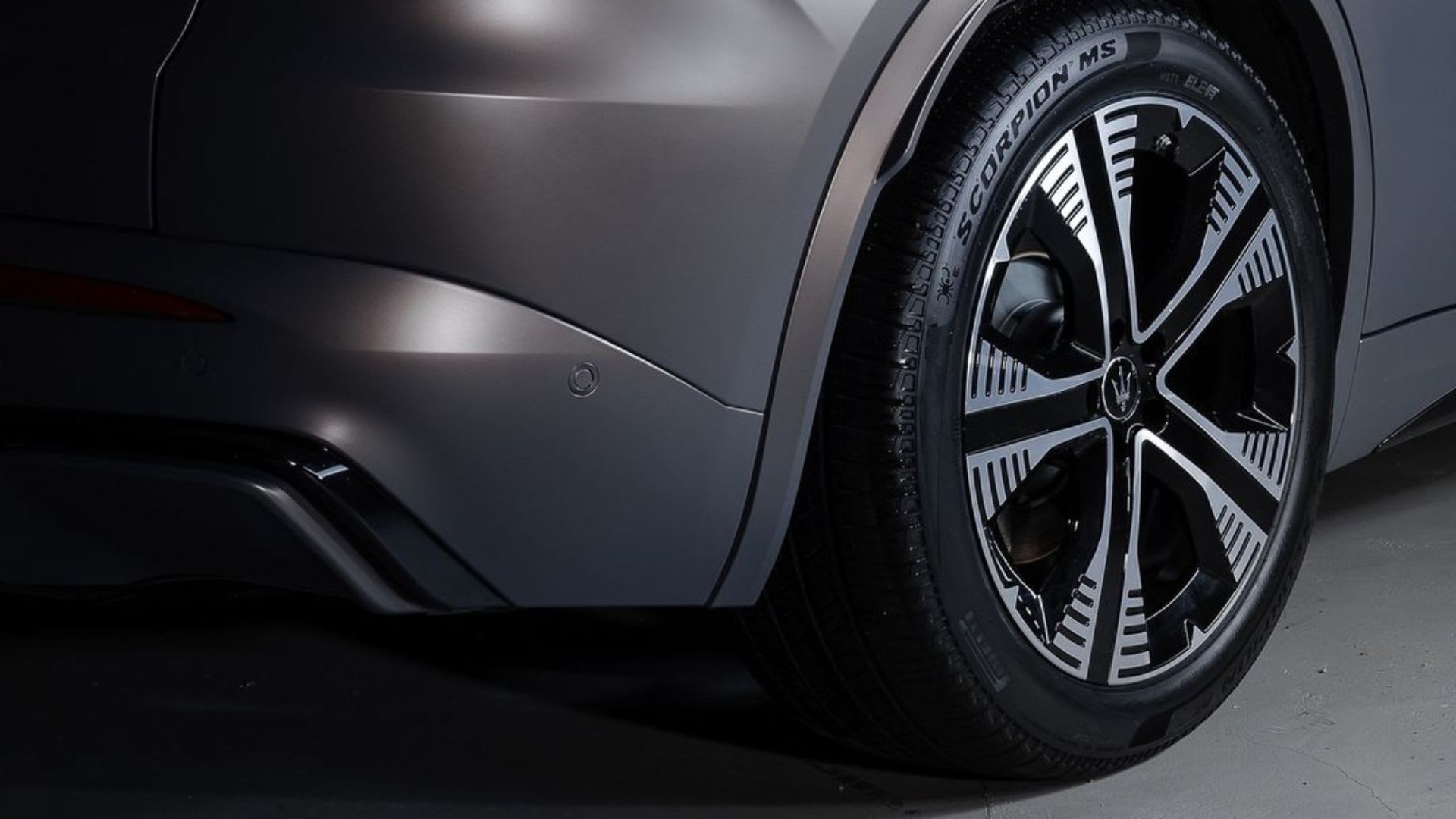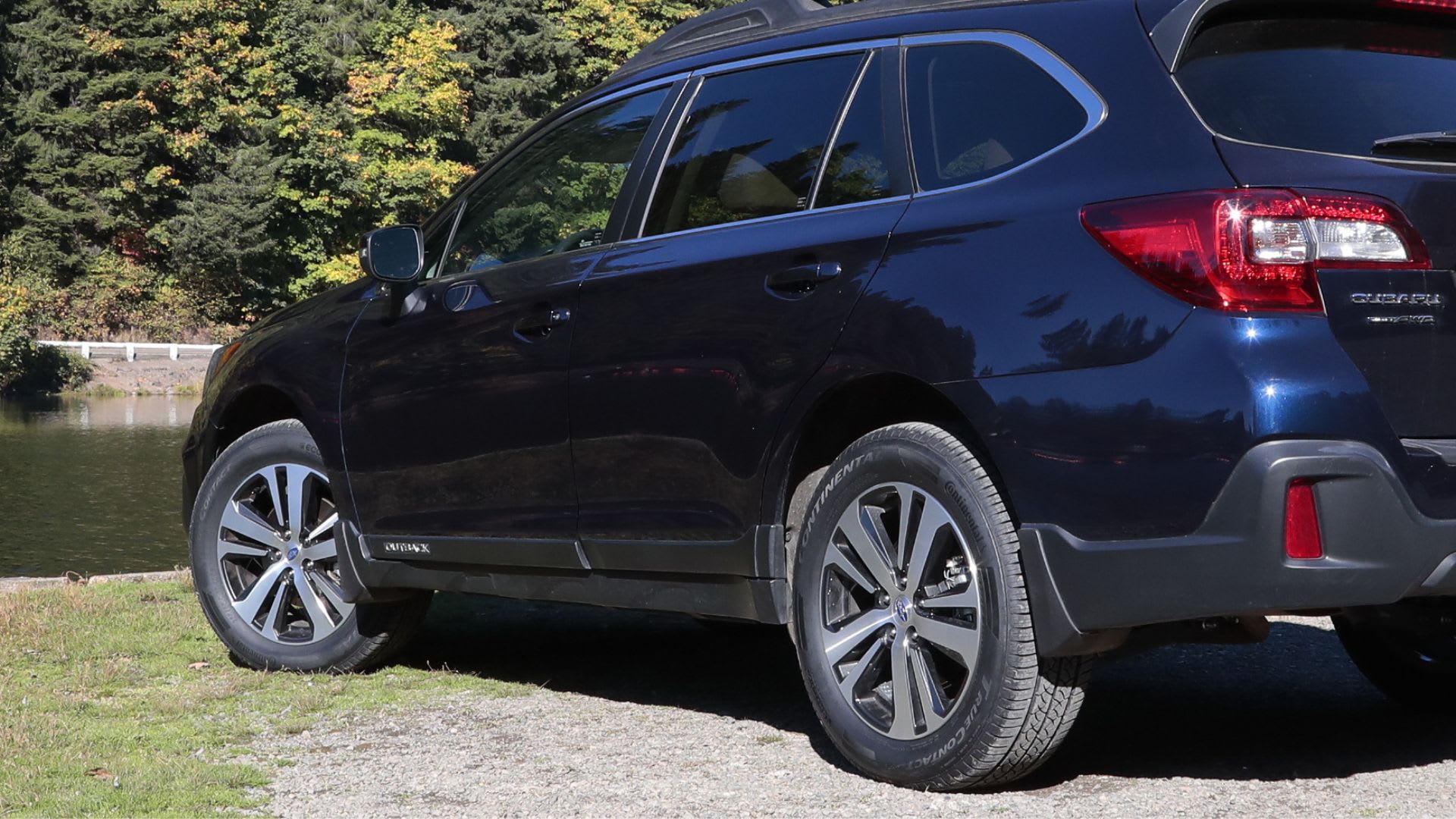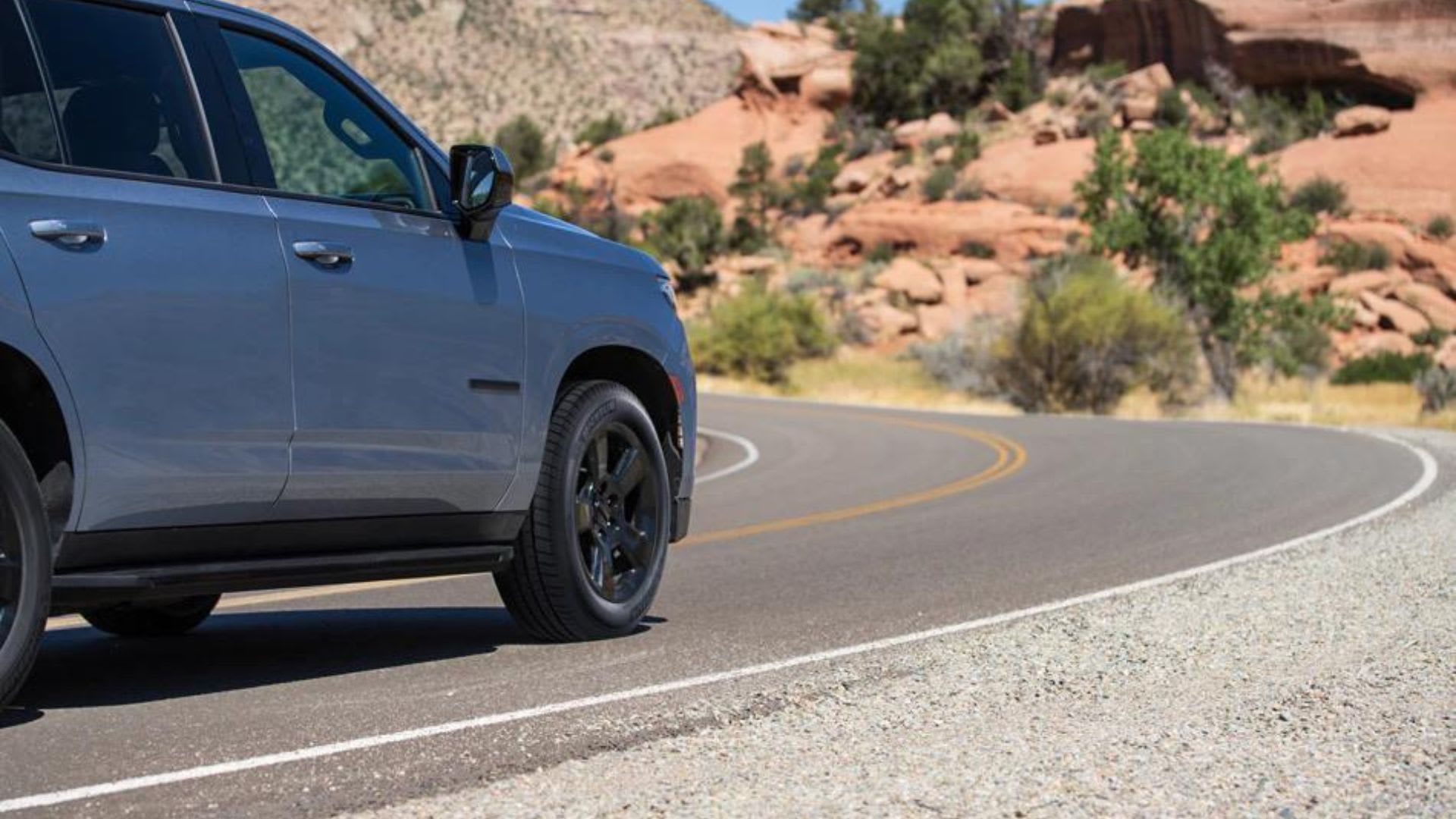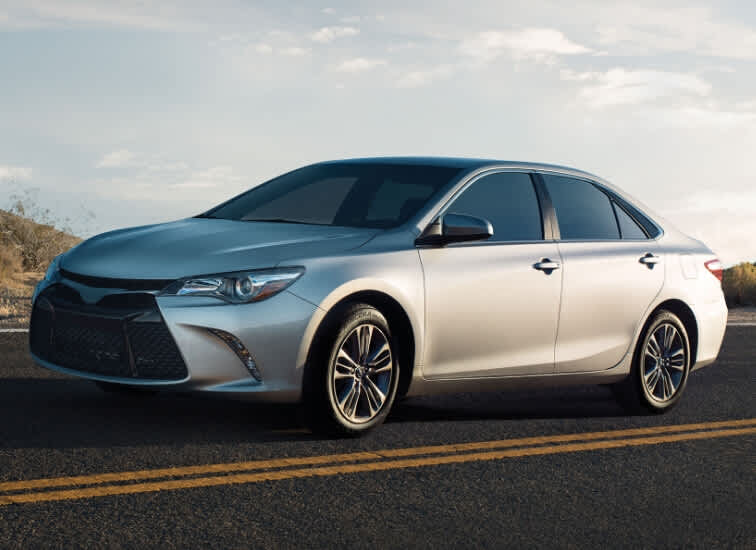Tire Buying Guides
Best price guarantee
Tire replacement coverage
24/7 roadside assistance
Easy returns

Many, many years ago on your dad’s giant woodgrain 70s Ford Country Squire wagon, there was such a thing as “mud grips,” “snow grips”, or “snow tires.” They were bias-ply tires (of course) and were designed with chunky lug treads that usually got decent traction when needed (especially if the driver put a bunch of cinder blocks or sandbags in the trunk for extra weight over the rear wheels), but they were heavy, cumbersome, and generated a howling drone on the highway…so your dad would take the Ford wagon to the tire shop and have those mud grips exchanged for all-season tires as soon as the first signs of spring appeared.
Those snow tires are as outdated as that Ford Country Squire now, with tire makers developing winter tires that rival some of the best premium performance tires, all-season or Grand Touring tires in terms of handling, road manners, ride quality and noise levels. Modern premium winter tires are designed around the handling properties, weight, power, torque, center of gravity, and overall driving dynamics of today’s sedans, coupes, minivans and crossovers, for a driving experience that’s refined and capable – but that’s also with solid grip, braking, acceleration, and control in some of the worst conditions that winter can send your way. We’re going to break down what modern winter tires are all about and what they have to offer for drivers who find themselves having to deal with several inches of snow and the kind of winter weather that keeps that snow on the roads for days or weeks at a time.
What are mud and snow tires?

For most drivers, all-season tires are great. They’re so great as a versatile jack-of-all-trades solution that they account for 84 percent of tire sales in the United States every year. All-season tires offer a quiet and accommodating ride, road manners that are stable and solid, capable and predictable handling, and good wear properties with a generous limited manufacturer’s tread life warranty. While all-season tires are great and versatile, they do come with one significant drawback: they usually don’t do well at all if there’s anything more than a light dusting of snow on the roads.
That’s where you really need a set of winter tires that are designed specifically for driving in snow and slush. Winter tires have a significantly different set of design features and materials, as compared to all-season tires. The tread formulation of all-season or performance tires can stiffen up and lose traction on colder days, but the tread compound of winter tires is softer and more pliable, designed to stay flexible in bitterly cold subfreezing weather so they can continue to deliver grip – think about how a hard rubber hockey puck would behave on a slick surface compared to a flexible rubber boot.
Winter tires also are designed with a different set of tread grooves and subgrooves; some winter tires feature grooves that actually trap and retain snow to build snow-to-snow friction. They also typically feature a dense pattern of sipes, hair-thin slits that multiply a tire’s tread area and traction with hundreds of thin, biting edges that can claw and slice their way through snow or slush while also helping to boost the tread’s stability. A typical tire can include anywhere from 10 to 30 different kinds of raw materials in its tread compound, and tire manufacturers have had to become pretty creative and innovative when it comes to winter tire formulations. Some winter tires even use materials like ground walnut shells or silica-based “micro-pore” compounds in their rubber recipes; microabrasives embedded into the tread surface to help that friction coefficient on slick or snowy roads. Hydrophilic materials in the tread compound actually attract and retain water to boost traction with winter tires. Many winter tires also feature enhanced internal construction for durability, including reinforced extra-rigid sidewalls and ply layers of high-tensile steel belts or even Kevlar fiber to resist cuts, punctures and impacts.
Ice storms can leave roads as slick as a hockey rink, sometimes too slick to even walk on. That’s when you need studded tires that use plastic, ceramic or metal studs embedded into the tread for grip on ice or heavy snow and slush. Studded tires are notoriously hard on pavement surfaces, which is why many states don’t allow them at all and other states limit their use to certain months. Many tire manufacturers offer winter tires that are pre-drilled to make it easy for a tire tech to install studs, which can then be removed when the worst of slick winter driving is over.
Mud tires, on the other hand, are usually all-terrain or rugged-terrain tires for light trucks; they’re designed with a different set of parameters for durability and performance as compared to winter tires. They feature a more aggressive lug tread with reinforced tread blocks and a higher void ratio, meaning the amount of rubber vs. grooves. All-terrain tires typically are designed with stone ejectors in the base of the grooves to easily shed mud and gravel from the tread, ensuring that there’s always a clear section of tread to dig into slick mud as the wheel turns.
Winter tires and mud tires are rated for traction and performance using a few different systems:
M+S rating: The M+S rating denotes enhanced grip on muddy or snowy surfaces, and an M+S rated tire will usually deliver better traction than an all-season tire…but not by much. For the M+S rating, 25 percent of the tire’s tread has to be taken up by grooves to dig into mud and snow as well as eject it from the tread. Other than that, a tire doesn’t really undergo that much in the way of testing or real-world use to merit that M+S rating for actual traction, although some tire manufacturers are now using AI-based testing for winter traction and the M+S rating.
3 Peak Mountain Snowflake (3PMSF) rating: The testing and qualifications for the 3 Peak Mountain Snowflake rating are quite a bit more stringent and specific than the M+S rating. The actual testing methods are a little too technical and esoteric to go into here, but a 3PMSF certified tire has to meet certain qualifications for acceleration, braking, and control on medium-packed, medium-depth snow and slush. That can be challenging, especially since a tire tends to “snowplow” and pile up snow in front of itself while braking, which affects control and handling.
Ice Grip rating: While the 3PMSF rating system was devised in the 90s, the Ice Grip certification is relatively new, having been developed in 2021. To qualify for Ice Grip certification, the conditions are a lot more strict and specific with certain temperature ranges, a certain inflation level for tires, specific weather conditions, specific numbers of miles driven, and so on. In the end, though, a tire has to demonstrate 18 percent better grip and performance than the “reference” tire. In other words, the Ice Grip rating (denoted by an ice-covered mountain peak on the sidewall) ensures you that your vehicle will get better grip than a Zamboni on an icy road.
We should also mention here that many all-weather tires are certified with the 3PMSF rating. All-weather tires are a fairly new category in the tire world; they essentially split the difference between all-season and winter tires when it comes to performance. That means the same kind of refined ride quality and handling as a premium all-season tire, but with more of an emphasis on winter traction, thanks to differences in tread compounds, sipes and tread design. All-weather tires are a great compromise for drivers who need better traction in snow and slush but don’t want to invest in a set of dedicated winter tires.
Here are a few examples of great winter tires that embody some of the design features we mentioned:
- Bridgestone Blizzak DM-V1: The Blizzak DM-V1 from Bridgestone features a dense pattern of sipes and a winter tread with a complex system of grooves and subgrooves that drain melted snow and slush from the tread to resist hydroplaning. The Blizzak DM-V1’s tread compound employs NanoProTube and Tube MultiCell technology for flexibility and winter grip in subfreezing weather. In SimpleTire’s SimpleScore rankings, the Bridgestone Blizzak DM-V1 registers SimpleScore numbers of 8.9 for traction, 8.3 for handling, 8.8 for longevity, and an overall average of 8.3
- Nokian Hakkapeliitta 7 SUV: Nokian is a Finland-based tire manufacturer (yes, the same parent company as Nokia phones) with decades of experience in design and manufacture of tires that are suited to the demands of a harsh Scandinavian winter. The Hakkapeliitta 7 SUV features a tread compound enriched with rapeseed oil for improved winter grip and wear properties, with a directional winter tread, dense network of sipes and an enhanced contact patch that puts the most rubber on the road for improved handling, braking and overall performance. The Hakkapeliitta 7 SUV’s SimpleScore numbers are 8.3 for traction, 8.1 for handling, 9.5 for longevity, with an overall average SimpleScore of 8.3.
- Yokohama BluEarth Winter V906: With the BluEarth Winter V906, Yokohama brings their environmentally-sustainable design philosophy to a winter performance tire. The BluEarth Winter V906 is designed with a polymer- and silica-rich tread compound for flexibility and traction, directional V-shaped grooves and adaptive 3D sipes to chew through snow and slush while offering lower rolling resistance to help save on fuel. SimpleScore rankings for the Yokohama BluEarth Winter V906 are 8.3 for traction, 8.8 for handling, 8.1 for longevity, and an overall average SimpleScore of 8.4.
- Goodyear Winter Command: This durable winter tire features circumferential and angled grooves that dig into snow and slush while routing melted snow behind the contact patch to resist hydroplaning, with an extra-deep initial tread depth of 13/32”. Along with its zigzag sipe design, the Winter Command is pre-drilled for installation of #12 studs in case of severe winter weather and ice. SimpleScores for the Goodyear Winter Command are 9.5 for traction, 8.8 for handling, 9.5 for longevity, and a very strong overall average SimpleScore of 9.2.
- Pirelli Scorpion Winter: The Scorpion Winter from Pirelli is designed for a quiet and refined ride with capable, responsive handling along with tenacious winter grip. The Scorpion Winter features a symmetric winter tread design with a network of grooves and sipes for winter grip and a continuous center rib that delivers stable on-center road manners along with steering response that’s quick and accurate. The reinforced shoulders of the Scorpion Winter mean great cornering ability and reduced tread squirm, and its low-rolling-resistance design helps save on fuel. The Scorpion Winter has an impressive set of SimpleScore numbers, with a 9.8 for traction, 9.6 for handling, 8.1 for longevity, and an overall average SimpleScore of 9.1.
Uses and benefits of using mud and snow tires

Here’s what it really comes down to:
If you live in a part of the country that has hard winter weather and bad road conditions, all-season tires are most likely not going to get the job done for you successfully. Your safety is more important than anything else when you have to get from point A to point B and back again, and you really don’t want to end up sliding into a ditch or (worse by far) sliding into another vehicle. Winter tires will give you that margin of safety and confidence that you need by delivering decisive traction for acceleration, braking, and cornering.
If you live in an area where you have to navigate muddy conditions (think oilfield lease roads, jobsites, ranch roads), then highway-terrain or all-season light truck tires are likely to leave you stranded. The void ratio, aggressive tread blocks, and reinforced construction of all-terrain tires will give you that extra edge that you need to get through sloppy, slick mud without getting hopelessly mired down, and the self-cleaning feature will help fling mud out of the tread grooves to ensure there’s always a clear section of tread to dig in instead of the wheels spinning helplessly.
Drawbacks of mud and snow tires
That said, winter tires and mud tires do have their disadvantages:
- Tread compound: That softer tread compound that winter tires use is designed to stay flexible at subfreezing temperatures (even subzero temps), but it has a real drawback. Winter tires will wear prematurely on dry roads at warmer temperatures, and tire manufacturers advise against using winter tires when daily temperatures are above 40-45 degrees Fahrenheit. Using winter tires in warmer weather will actually void warranties, so when things warm up again you’ll need to visit the tire shop to have those winter tires dismounted from the rims and replaced with all-season tires. And then, of course, you’ll need to figure out a place to store those winter tires until next year.
- No treadwear coverage: Due to their seasonal nature and softer, specialized tread compound, most tire manufacturers do not offer limited manufacturer’s tread life warranty coverage with their winter tires.
- Noise and handling: While it’s certainly not true for all winter tires, some models tend to generate more noise on the highway, and handling on dry pavement can be a little sluggish with some as well.
- Restrictions on studded tires: As we mentioned above, many states don’t allow studded tires at all due to the way they chew up pavement surfaces, and other states restrict them to certain months on the calendar.
- Fuel economy: With some (not all) winter tires, the extra friction they generate for traction also means increased rolling resistance. That means more energy is expended to get the vehicle moving and rolling down the highway, resulting in a hit on gas mileage.
As for all-terrain and extreme-terrain tires:
- Poor fuel economy: (See above)
- Extra noise: While many all-terrain tires are computer-tuned to keep road noise low, others tend to generate more pattern noise on the highway due to their lugs and aggressive tread blocks.
- Lack of grip: It seems counterintuitive, but an all-terrain tire isn’t necessarily going to be a good tire in winter. Look for the 3PMSF rating if you want an all-terrain tire that will perform well in snow. If you go into the most extreme muddy situations, then all-terrain tires might fall short of getting the job done and that’s when you need extreme-terrain or mud-terrain tires, which come with their own sets of pluses and minuses.
- Maintenance and mechanical issues: In some cases, all-terrain tires and their extra size and weight can have an effect on braking performance and overall wear and tear on wheel bearings, spindles, and suspension/steering parts; in addition, a lifted vehicle with all-terrain tires can experience issues with driveline angles and suspension/steering geometry.
Signs you need mud and snow tires

What do you really need from a set of tires? If you only get a couple of mild snowstorms a year, do you really need a dedicated set of winter tires? Probably not, but if you live in the upper Midwest, New England, or Canada, you are almost undoubtedly going to have to navigate snow-choked roads every year and winter tires are the only thing that will let you do that with confidence. The same with all-terrain tires for muddy conditions – you know the answer to what your real needs are in a set of tires, and if you have to handle either snow or mud on a regular basis, then all-terrain or winter tires are simply going to be your best option for doing that safely.
Ready to find the perfect tires?
Search By